Pick a language
News
OPENING THE BOX TMK 440 FERRARI 400 SUPERAMERICA 1962
There was a lot of anticipation around this kit, which retailers have received these days. The history of the model is at least as particular as the real car. Not so long ago, Luca Tameo found in a drawer a master abandoned for thirty years: the Ferrari 400 Superamerica used as a personal car by the Commendatore. In the eighties Tameo Kits was a rightly famous brand also for some beautiful models of GT and Sport-Prototype cars, before Luca devoted himself exclusively to single-seaters.
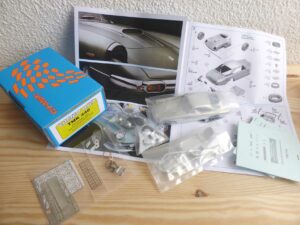
Just last year, the Sport series resumed with the release of a model in the new Montegrosso range, the 1970 Ferrari 512S, followed by the 512M. As for Superamerica, the idea soon made its way into the mind of the Ligurian model maker: to release the model without too many modifications, also in order not to irremediably distort the original concept. So here is a kit poised between past and present, which must be appreciated and judged according to its distant origins.
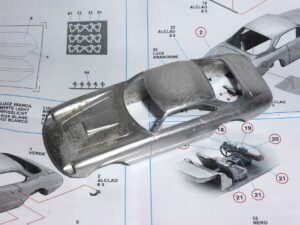
Tameo is now one of the leaders of the white metal. It was a sight to admire on Facebook the photo of all the bodies lined up after the casting. The kit consists of a few pieces: in addition to the bodywork, a floor (simple, without writing or graffiti … too bad!), A dashboard, the central tunnel seat group, bumpers and little else. Speaking of the bumpers, it’s a pity we didn’t have them nickel-plated, as they used to do. Patience, the paints available to modellers today work miracles.
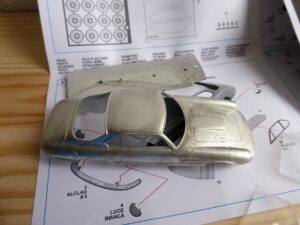
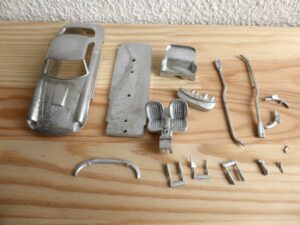
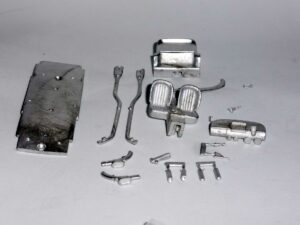
Photo-etcheds (including those of the rays) are very refined; not many, as it should be, and their quality is beyond question. Photoengraved are the frames of the side windows, while for those of the windscreen and rear window the fusion in the bodywork was chosen, a hybrid solution that in my opinion always has its reasons. The acetates of the gwindows are of excellent quality, transparent and without any defects.
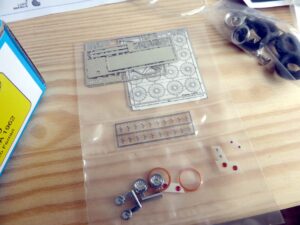
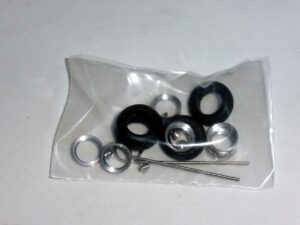
Two sheets of decals (in duplicate), one of which with chromed decorations accompany the kit. Someone, in my opinion unfairly, criticized the choice of simulating the side grilles with “simple” decals, suggesting that they could have been better copied with photoetcheds. Now, apart from the smallness of the pieces – the grids are really small – their shape is quite suitable to be reproduced with a decal. Choosing the photoengraving method would have involved a hole in the bodywork and the need to perfectly fit a “foreign” piece. Would all this extra effort lead to more realism?
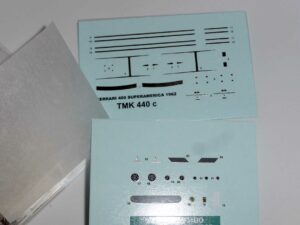
The kit is completed by the “high tech” instructions that Tameo has accustomed us to for some time. There will be no few top or presumed fitters who will try their hand at assembling this kit.
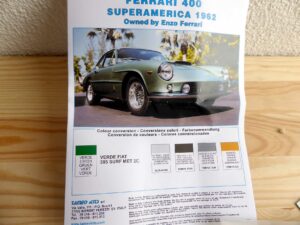
A little history of this wonderful car.
The 400 Superamerica chassis 3097SA was used as a personal car by Enzo Ferrari between 1961 and 1962. It had to be a kind of experimental car, given the many peculiarities that distinguished it from the “standard” models (however standard each individual 400 may be Superamerica). Differences were found in the chassis, suspension and even the engine. The car was painted in a beautiful “Verde Dora” with a beige interior, which turned black when the 3097SA was resold through the Crepaldi dealer. On that occasion, who knows why, the chassis number was also changed to 4031SA (but the trace of the number 3097SA can still be seen under the new figure). The car had a fairly mysterious history in the years that followed. It is then found in the United States where it changed hands two or three times; There is evidence of a total engine overhaul performed in Maranello in 1974. Since 2001 the 3097SA / 4031SA has been owned by Miles Colliers Collections, which bought it at Christie’s Pebble Beach auction.